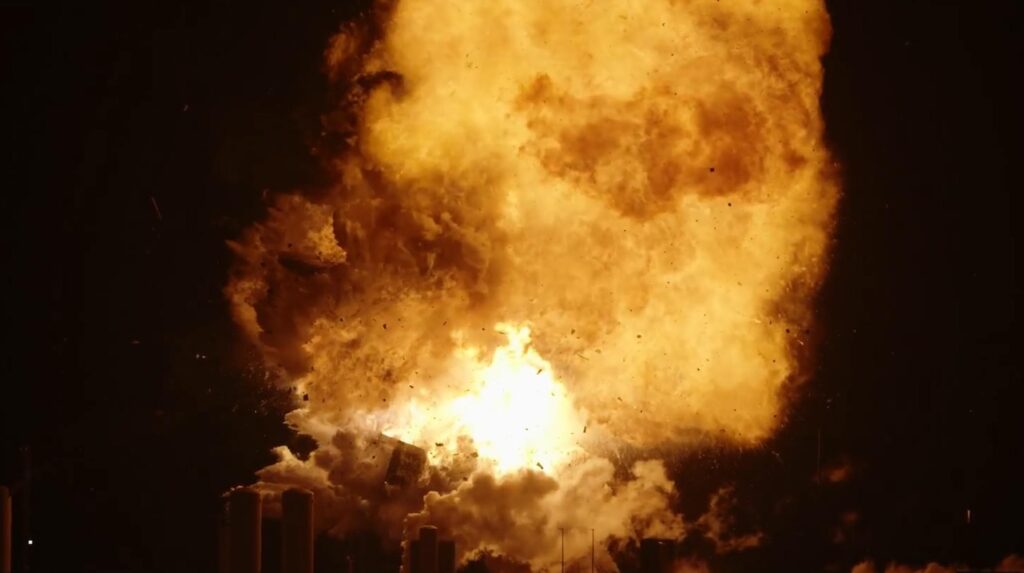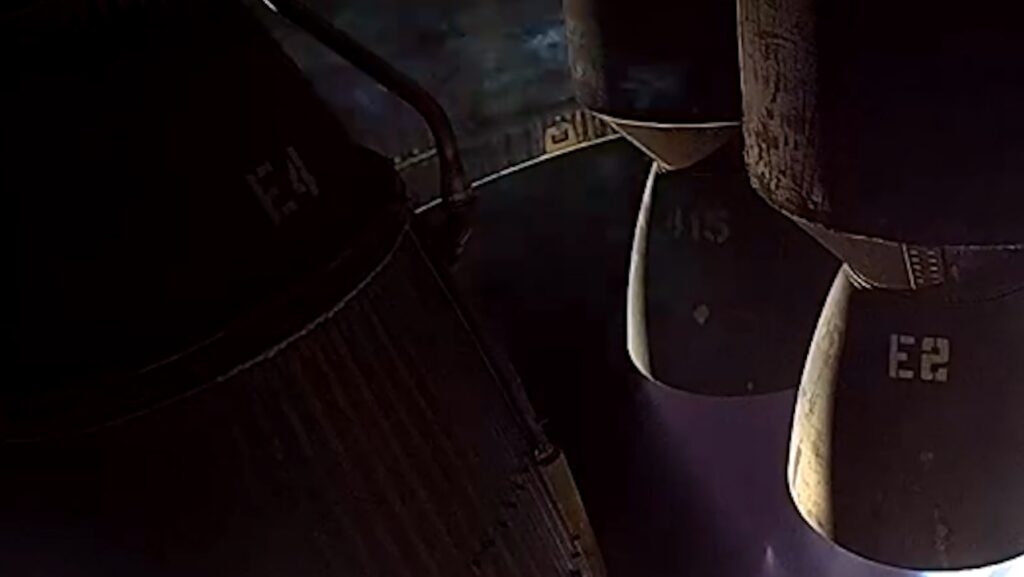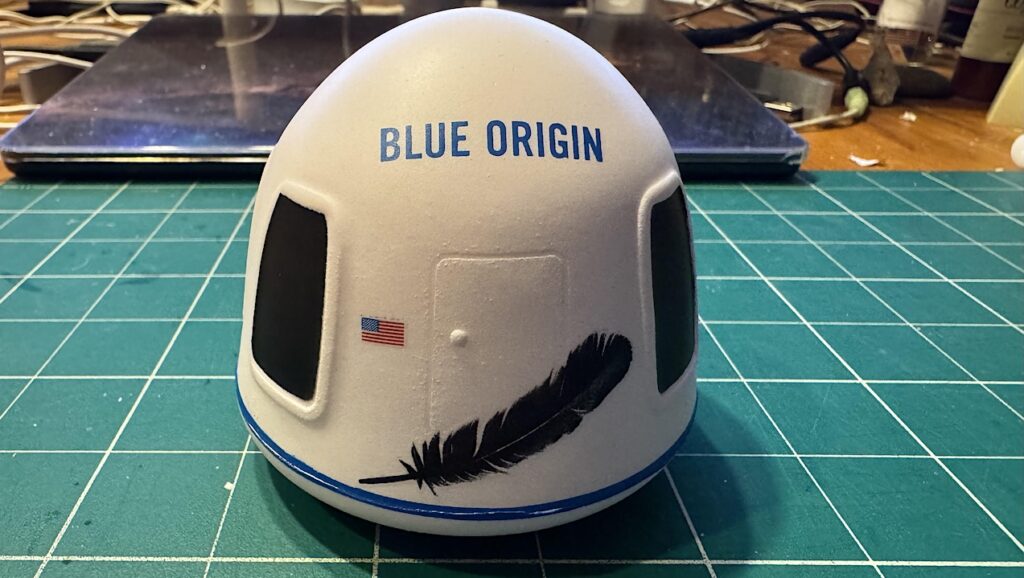The SpaceX Starship Users Guide Is Now Online

SpaceX Starship Users Guide Revision 1.0 March 2020
“SpaceX’s Starship system represents a fully reusable transportation system designed to service Earth orbit needs as well as missions to the Moon and Mars. This two-stage vehicle–composed of the Super Heavy rocket (booster) and Starship (spacecraft) as shown in Figure 1–is powered by sub-cooled methane and oxygen. Starship is designed to evolve rapidly to meet near term and future customer needs while maintaining the highest level of reliability.
Starship has the capability to transport satellites, payloads, crew, and cargo to a variety of orbits and Earth, Lunar, or Martian landing sites. Potential Starship customers can use this guide as a resource for preliminary payload accommodations information. This is the initial release of the Starship Users Guide and it will be updated frequently in response to customer feedback.”









If StarShip is the upper portion of this rocket (and SuperHeavy is the lower booster) … then it doesn’t look big enough for 100 pax.
It’ll be interesting to see StarShip reenter the atmosphere, as interesting as it was to watch a Falcon booster land.
…Let alone staterooms and a large common area.
Perhaps the user guide is “aspirational”….
That seems likely. If the volume of the vehicle is similar to the cargo configuration (8 m diameter, 17.24 meters long), that would be 867 cubic meters. Assuming it was a cylinder (which it isn’t) and all the volume was available for passengers. With 100 passengers, that would be a bit over 2 x 2 x 2 meters each. I’d be comfortable calling that a cabin, and a nice one given how volume is more efficiently used in free fall. But that’s the upper limit, and wouldn’t leave room for a “large common area.”
There are 2 available payload bay lengths. The larger is 8×22 meters – over 2 more rings.
Fine. But I assumed the volume was a cylinder, although I noted it really wasn’t. Allowing for the taper of the top 9.24 meters, the volume is only 665 m^3 for the 17.24 m length and 905 m^3 for the 22 m length. So that doesn’t alter my conclusion. (People are frequently surprised that the volume of a cone is only one third the volume of a cylinder with the same height and base area.)
And don’t forget the life support equipment and consumables. I never seen those talked about before. I would like to know if they are going to get the oxygen for breathing from the LOX/fuel tanks or have a separate source.
No. You don’t get it (with all due respect). This is what SpaceX was founded to do. If there is some aspects of their plan that is deficient, then they will work on those deficiencies to fix them. They are going to develop a spaceship (Starship) that will be able to land on mars, and eventually return. Elon Musk is determined to develop a transportation system between mars and earth.
And he well might. But this (the spacecraft described in this brochure) isn’t going to carry 100 people to Mars in a single mission.
I don’t see it quite that way. Yes, Mr. Musk and SpaceX are working towards such a spacecraft. And, yes, they do take an evolutionary approach. But they are on, what, the third or fourth major redesign (and renaming) of that spacecraft. The current concept of “Starship”, as described in this Users Guide, simply doesn’t have to volume for both the number of passengers and the passenger accommodations they are ultimately shooting for. Not by a long shot.
Does that mean they’ll never develop a 100-person vehicle, with staterooms and spacious common areas? (And able to support those passengers for months…) No, with some luck, they could eventually develop such a thing. But it isn’t going to be “Spaceship” as currently described. And I don’t think it will be a simple evolution from the current “Spaceship.” It would probably be a whole different vehicle, almost certainly designed using experience gained from Spaceship, but, I think, fundamentally, a whole different design.
I stated the same thing in another forum and I was told the engineers know what they are doing. But I don’t care it still doesn’t look big enough to comfortably send 100 people to mars.
It could be like the original marketing for the Airbus 380. Airbus talked about the luxurious passenger accommodations. Airbus also talked about room for as many as 850 passengers. In the fine print, they did mention that it depended on the cabin configuration the customers ordered, and the luxury accommodations and the high capacity were for different configurations. Maybe Starship would provide space for 100 passengers _or_ staterooms and a large common area for a smaller number of passengers, depending on the cabin configuration.
Could be but to me it just doesn’t look big enough for just 100 passengers even without the large common area. I wouldn’t be surprised if the 100 number get scaled back for the space flight mode.
That depends on how tightly the pack the passengers in. Two cubic meters per person would be on par for economy class on a commercial aircraft. That would only take up a quarter of the volume on the described Starship. And packing passengers in that tightly might be viable for short, Earth to LEO trips.
I understand. But the Boeing 777 doesn’t look big enough for 390 passengers. Somehow, airlines have managed to fit that many people in them on a regular basis. (Although the recent events and social distancing may change that, even after CODIV-19 is no longer a crisis.)
Edit: I’m thinking of surface to LEO trips, which could take less time than a Denver to Tokyo flight. Longer trips would certainly need to give the passengers more room.
I understand but Musk said the 100 number was for a trip to Mars.
Lots of interesting tidbits in there, like a payload of 100+ t to LEO in an “Up to 500-km circular orbit at up to 98.9-deg inclination”. And for GTO it’s 21 t to “185 x 35,786 km orbit at 27-deg inclination with 1800 m/s delta-V to go”.
Also 2 cargo bay sizes: 8×17.24 and 8×22 meters.
And it seems the cargo modules can be swapped to create different vehicle configurations; Chomper, Cargo, Crew, Tanker, Lander…
Sounds like Thunderbird 2.
I think the gauntlet has been thrown down to Blue Origin. Before their New Glenn rocket (a credible competitor to Falcon Heavy) has ever orbited, there is a competitor that has raised the bar substantially. I know that Jeff Bezos has deep pockets, but even so, he has to be taking notice.